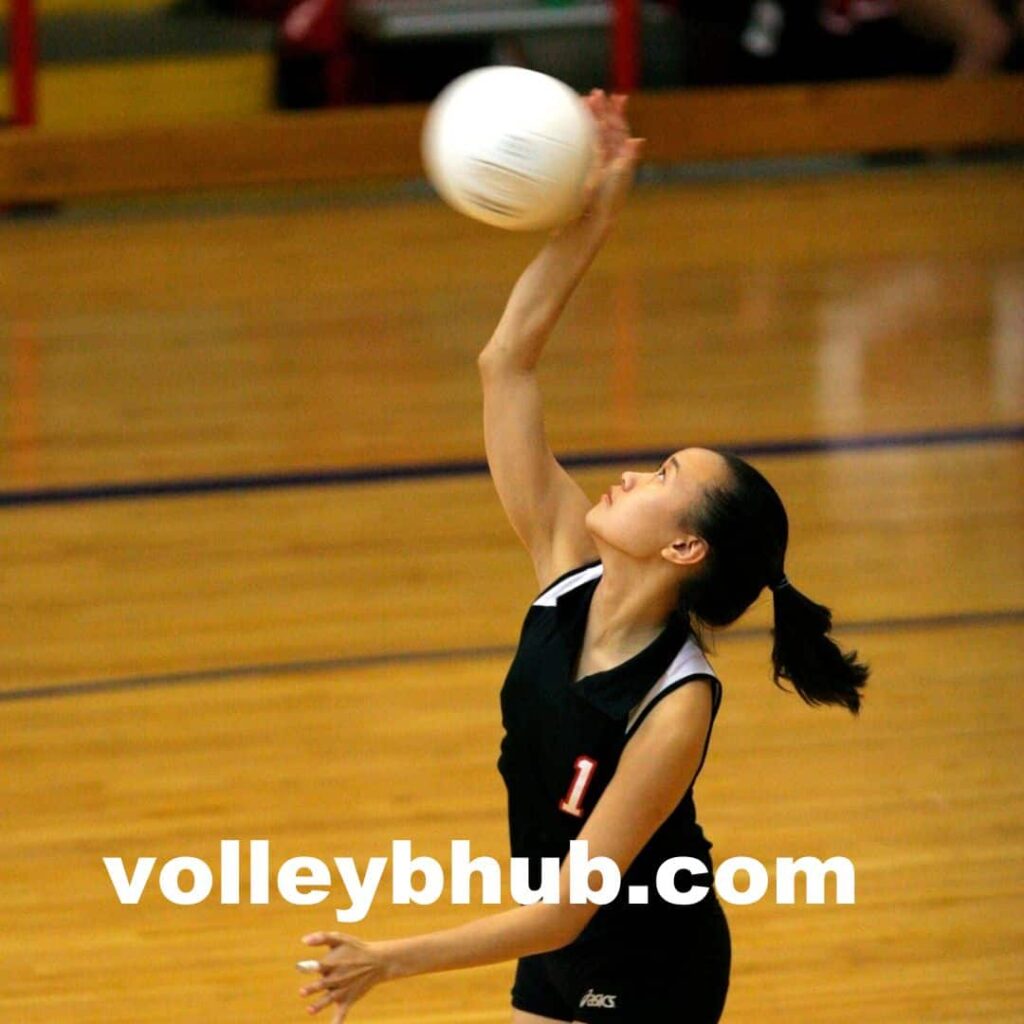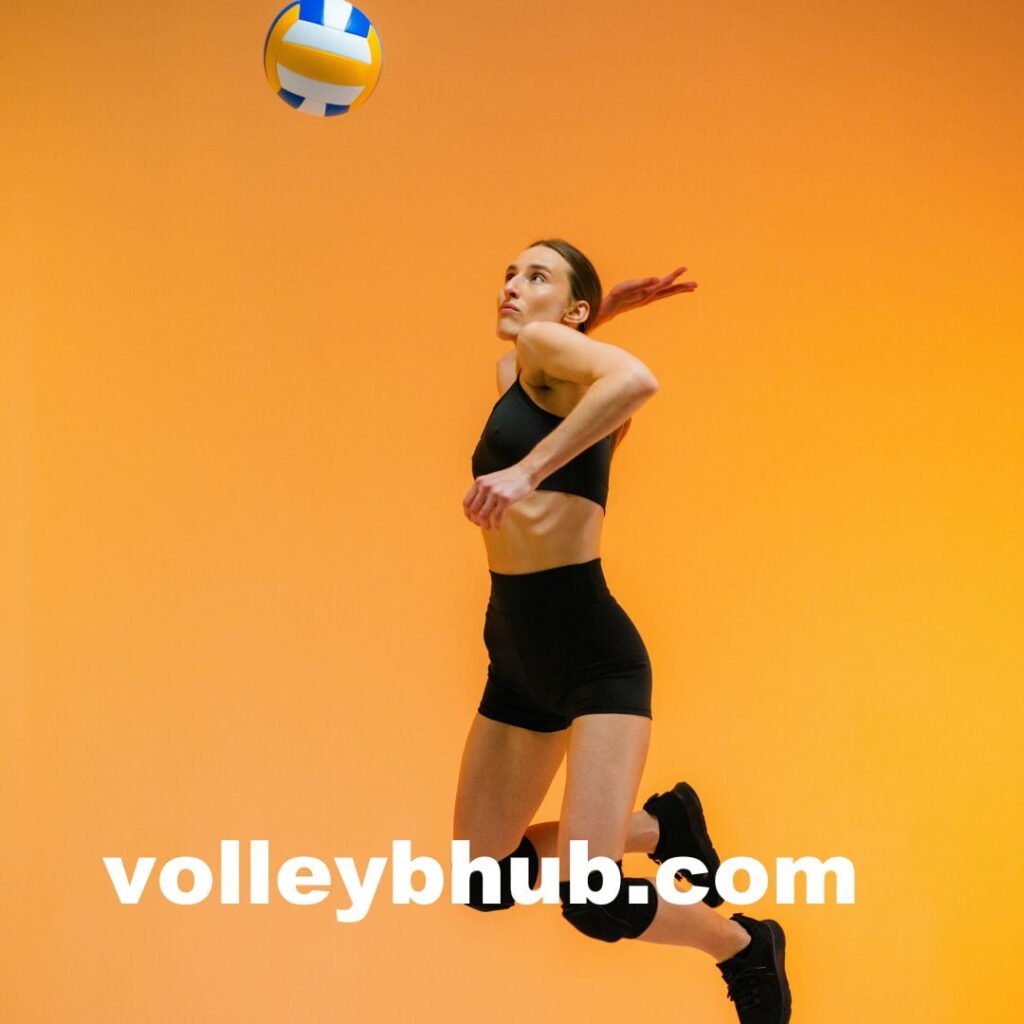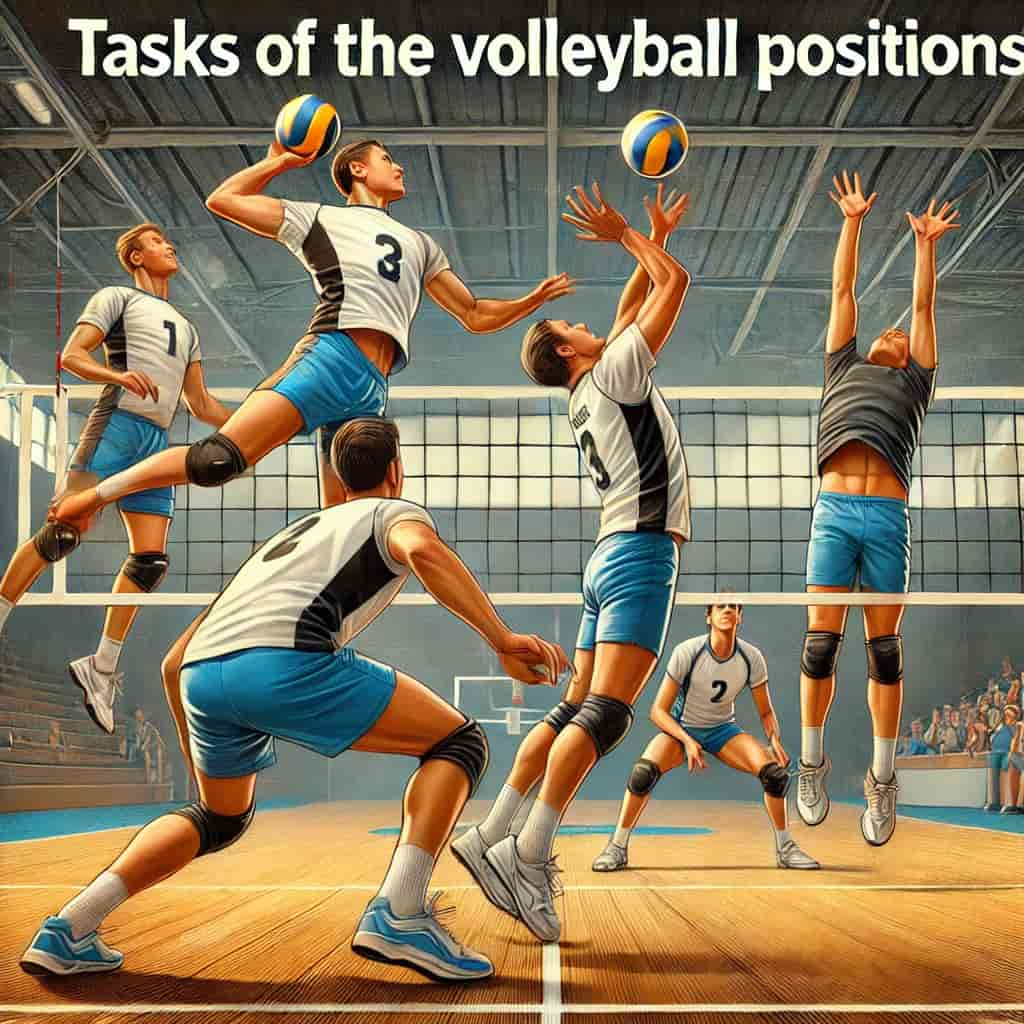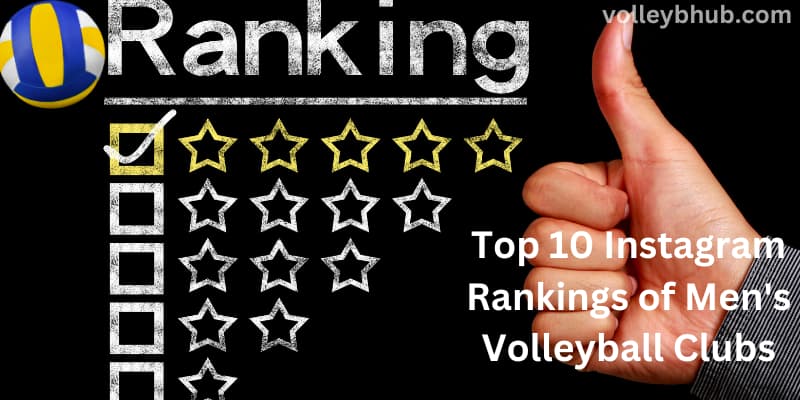![Volleyball Terms That Will Transform Your Game [Winning Edge]](https://volleybhub.com/wp-content/uploads/2024/09/Volleyball-Terms-That-Will-Transform-Your-Game-Winning-Edge-2.jpg)
Volleyball Terms: A Beginner’s Guide for Coaches and Players
If you’re new to coaching or playing volleyball, understanding basic volleyball terms is essential. These terms form the foundation of the game and are used frequently during training, games, and team discussions.
Whether you’re a beginner coach looking to expand your knowledge or a player aiming to improve, learning this volleyball vocabulary will help you communicate effectively and enhance your skills.
This guide organizes essential volleyball terms to provide a clear, concise reference. Familiarizing yourself with these words will improve your understanding of the game, making you more confident when talking about, coaching, or playing volleyball.
Volleyball Positions: Roles and Responsibilities
Understanding the roles of each volleyball position is crucial for both players and coaches. Each position on the court has specific duties that contribute to the team’s success. Whether you’re learning the game or refining your strategy, this guide will help clarify the responsibilities of key volleyball positions.
1. Outside Hitter (Left-Side Hitter)
The outside hitter, also known as the left-side hitter, plays on the left side of the court in both the front and back rows. Their main responsibilities include attacking and passing. This player typically receives the majority of sets—over 60%—and must be skilled at hitting, even in less-than-perfect situations. When playing in the back row, they also need to excel at serve reception, serving, and defense.
2. Middle Blocker
The middle blocker plays in the center of the front row and focuses on both attacking and blocking. This player is responsible for reading the opponent’s offense and moving quickly along the net to block. They are often substituted by the libero in the back row, depending on the team’s needs and the player’s abilities.
3. Opposite Hitter (Right-Side Hitter)
The opposite hitter, or right-side hitter, plays on the right side of the court in both the front and back rows, as long as they are not setting. Their primary role is to attack and block, especially focusing on blocking the opposing team’s outside hitters. At higher levels, they play a critical role, although back setting to them can be challenging at lower levels.
4. Setter
The setter is in charge of the second ball and is responsible for setting up the hitters with hit-able balls. Their decision-making and court vision are essential, as they determine who receives the set. The setter usually plays on the right side, either in the front row, back row, or both, based on the players’ abilities and team strategy.
5. Libero
The libero wears a different color jersey and only plays in the back row, usually in the middle-back position. This player specializes in passing during serve reception, playing defense, and acting as a backup setter. The libero can substitute for any back-row player and is crucial for maintaining consistent ball control. Depending on the league rules, one or two libero may be used during a match, and they can substitute for each other as needed.
6. Defensive Specialist (DS)
A defensive specialist is a player who is subbed in specifically to play in the back row. Their primary role is to play defense and pass on serve receive. They are typically subbed in before their teammate serves or immediately after, depending on the team’s defensive strategy.
7. Serving Specialist
A serving specialist is subbed in solely to serve for a teammate. After serving, this player is usually subbed out once the opposing team regains possession. The decision to use a serving specialist is based on the players’ serving abilities and team needs.
Essential Volleyball Terms for Players and Coaches
1. Ace
An ace is a serve that the opposing team cannot return, resulting in an immediate point for the serving team.

2. Antenna
The antenna consists of vertical red and white rods attached to the net above the sidelines. Balls that touch the antenna are out of play.
3. Approach
The approach is the quick stride a spiker takes toward the net before jumping to hit the ball.
4. Assist
An assist is when a player passes or sets the ball to a teammate who makes a successful attack, leading to a point.
5. Attack
An attack is an offensive move where a player hits the ball to the opponent’s side, aiming to score.
6. Attack Block
An attack block is a defensive attempt to block an opponent’s spike before the ball crosses the net.
7. Attack Error
An attack error occurs when an attempted attack fails, either by sending the ball out of bounds or into the net, or when the opponent successfully blocks it.
8. Attacker (Spiker)
The attacker, also known as the spiker, is a player who attempts to hit the ball offensively to score a point.
9. Attack Line (10-Foot Line)
The attack line is the 3-meter line from the net that separates front-row players from back-row players.
10. Backcourt
The backcourt is the area of the court between the Endline and the attack line.
11. Back Set
A back set is a set delivered behind the setter to an attacker.
12. Back Row Attack
A back row attack occurs when a back-row player jumps from behind the attack line to hit the ball. Crossing the line during takeoff results in an illegal attack.
13. Beach Dig
A beach dig is an open-hand pass used to receive a ball, often referred to as a “deep dish” in beach volleyball.
14. Block
A block is a defensive play by one or more players intended to stop a spiked ball from crossing the net.
15. Bump
A bump is another term for a forearm pass, used to receive serves or dig attacks.

16. Ball Handling Error
A ball handling error is any mistake involving illegal contact, such as a double hit or lift.
17. Bump Pass
A bump pass involves using joined forearms to pass the ball in an underhand motion.
18. Campfire
A campfire refers to a ball that drops in a circle of players without anyone attempting to pass it.
19. Center Line
The center line divides the court into two equal halves beneath the net.
20. Closing the Block
Closing the block refers to the act of joining the primary blocker to prevent the ball from passing through a gap between blockers.
21. Cross-Court Shot
A cross-court shot is an attack hit diagonally across the opponent’s court.
22. Cut Shot
A cut shot is a spike that travels at a sharp angle across the net from the hitter’s strong side.
23. Decoy
A decoy play is designed to mislead the blockers about which player will receive the set.
24. Deep Set
A deep set is delivered away from the net to confuse blockers and disrupt their timing.
25. Dig
A dig is a defensive move where a player passes a spiked ball, keeping the play alive.
26. Dink
A dink is a soft push over or around blockers, often used when a powerful spike is not possible.
27. Double Block
A double block occurs when two players work together to block an opponent’s attack.
28. Double Hit
A double hit is an illegal contact where a player touches the ball twice in a row.
29. Down Ball
A down ball is an attack that lacks power or is not spiked due to poor positioning, allowing defenders to stay on the ground.
30. Float Serve
A float serve is a serve that moves unpredictably without spin, making it difficult to return.
Additional Volleyball Terms and Phrases
1. Overpass
An overpass occurs when a player from the receiving team accidentally sends the ball back over the net to the opposing team instead of controlling it for a pass.
2. Rally
A rally refers to the continuous play that occurs while the ball is in motion between teams, starting from the serve and ending when the ball hits the floor or goes out of bounds.
3. Side-Out
A side-out happens when the receiving team wins the rally and earns the right to serve.
4. Approach
The approach is the specific footwork sequence that an attacker uses to time their jump and generate momentum before hitting the ball. This helps them reach the right height and power during the attack.
5. Arm Swing
The arm swing describes the motion of a hitter or server’s arm when they generate force to hit or serve the ball, crucial for power and accuracy.
6. Hitting Error
A hitting error occurs when an attacker’s hit goes into the net, out of bounds, or hits the antenna, resulting in a loss of the point for the attacking team.

7. Kill
A kill is a successful attack that results in the ball hitting the floor or preventing the receiving team from making a controlled second contact. A mishandled dig from this attack is often called a shank, and the attacking team earns a point.
8. Sideline
The sidelines are the two long lines running the length of the volleyball court, measuring 60 feet. These lines mark the side boundaries of the court, aligned with the antennas.
9. End Line
The end lines are the shorter boundary lines that run the width of the court, measuring 30 feet. A player serving the ball must stay behind this line and avoid stepping on it before making contact.
10. Center Line
The center line runs directly under the net and divides the court between the two teams. It is 30 feet long, and rules regarding stepping on or crossing this line during play may vary depending on the league.
11. 10-Foot (3-Meter) Line
The 10-foot line (also known as the 3-meter line) is a boundary that runs across the width of the court, 10 feet from the net. This line indicates the limit for back-row players attempting to jump for an attack, and it also sets the boundary for the Libero when making an overhead set to an attacker.
Read Also: 5-1 Volleyball Rotation [Top Strategies]
Key Volleyball Terms – General Skills
1. Pass
A pass is the first contact made by the receiving team after a serve. The player responsible for this action is called the passer. Typically, a pass is executed using the forearms (known as a bump), but it can also be made overhead with two open hands.
2. Set
A set is the second contact made after a pass or dig. The player performing this action is known as the setter. A standard set is made with two hands overhead, but in some cases, a bump set—executed with the forearms—can be used. A player can also send the ball over the net on the first, second, or third contact using the same motion as a set.
3. Stuff Block
A stuff block occurs when a defensive player or team successfully stops the ball from crossing the net during an opponent’s attack. The ball is blocked and falls back onto the attacker’s side of the court, resulting in a point or change of possession.
4. In-System
A team is considered in-system when they are able to run their offensive plays smoothly due to a perfect pass or dig. This allows the team to set up an organized attack, giving the setter multiple options for delivering the ball to attackers.
5. Out-of-System
An out-of-system situation arises when a team is forced to run its offensive plays after a poor pass or dig. This limits the setter’s options and usually leads to a less effective attack.
6. Transition
Transition in volleyball refers to the moment when a team shifts from defense to offense. After a successful dig or defensive play, the team regains control of the ball and prepares to set up an attack, moving from a defensive to an offensive position.
FAQ’s: volleyball terms
What are the basic terms used in volleyball?
In volleyball, essential terminologies encompass:
Dig: The act of receiving and controlling a forcefully hit ball.
Dink: Strategically pushing the ball over opponents’ blockers.
Double Hit: A prohibited action where the ball is hit twice consecutively by the same player.
Floater: A spin-free serve that follows an erratic path.
What is the term for striking a volleyball?
A spike, often referred to simply as a hit, involves an offensive player executing a one-arm motion above their head to forcefully attack the ball, typically aiming to score directly, known as a kill.
What role does a libero play in volleyball?
A libero serves as a defensive specialist positioned in the back row. This player is distinguished by their ability to freely substitute for another player, concentrating primarily on receiving and digging balls, without the need to rotate to the front row.





